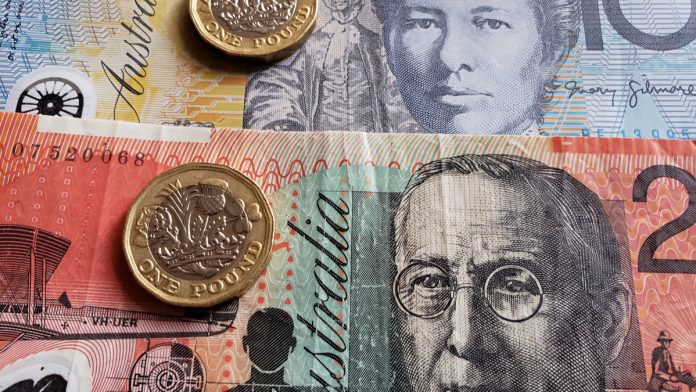The British pound is lower against the Australian dollar on Monday.
Traders are taking an opportunistic view on the Aussie dollar ahead of this week’s Reserve Bank of Australia meeting.
The hospitalization of British Prime Minister Boris Johnson has cseen the uplift in sentiment that goes with a rebound in stock markets benefit the Aussie more than Sterling, reversing the tendency seen last week.
GBP/AUD was down by 209 pips (-1.03%) to 2.0154 with a daily range of 2.0126 to 2.0436 as of 4.30pm GMT.
The currency pair fell like a stone and didn’t look back. From a peak of 2.04 it dropped to under 2.02. The losses on Monday have already completely reversed the gains in exchange rate from last week of +1.22%.
British pound rolls over as Bojo hospitalised
News that the British Prime Minister Boris Johnson had been hospitalised because of his COVID-19 symptoms may have been the difference-maker for the exchange rate on Monday. The hospital visit was said to be just precautionary but nonetheless raised question about a loss of leadership while he is out of action.
While Sterling was able to recoup the early losses in other currency crosses when market sentiment improved during European trading hours, the losses accelerated against the Aussie, which also tends to benefit from higher market optimism.
Australian dollar benefits from risk-on sentiment
Outside of the price of oil, investors have been taking direction from the words and actions of national governments in response to the “flattening curve” of new coronavirus infections. Denmark, France and Spain are all reportedly aiming for Easter as a time to rollback lockdown restrictions as the daily rise in new cases begins to flatten out.
The commodity-sensitive Aussie dollar gained as oil prices remained volatile. Crude oil prices fell over 10% on heavy volumes in early trading before rebounding to cut the losses in half on news an emergency OPEC meeting had been reschedule from Monday to Thursday.
While the situation at home looks challenging, the Australian government stepped upped its efforts last week with new welfare initiatives and a program of “hibernating” businesses that have been forced to close with payments to workers and cheap loans.





